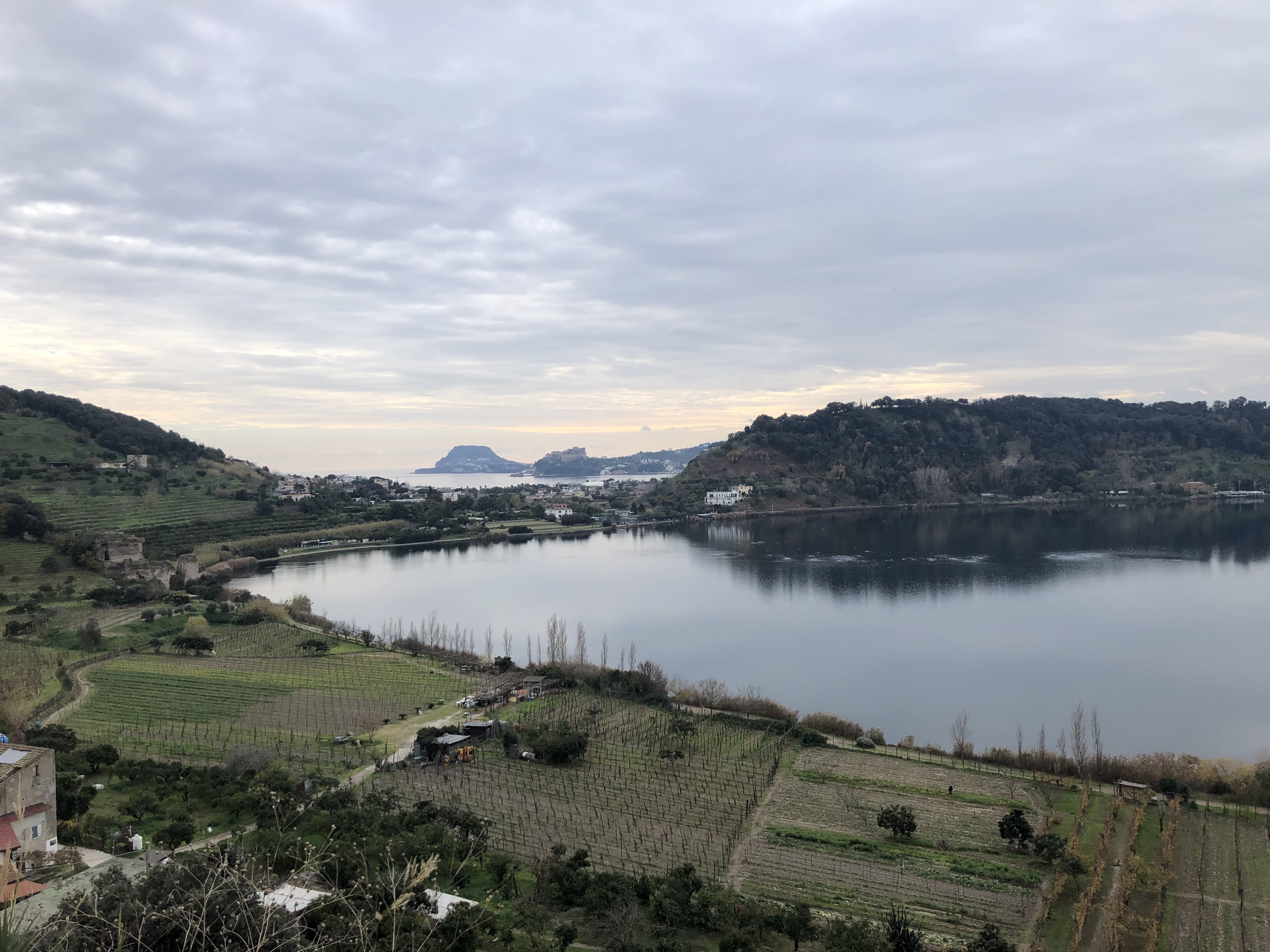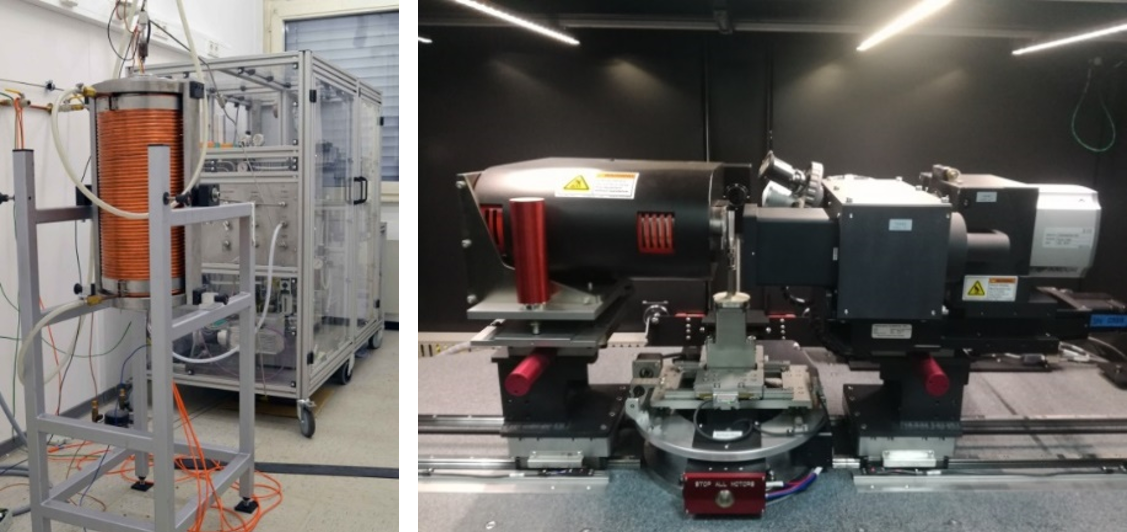 The crater lake of the Averno eruption; in the background the Miseno tuff cone.
The crater lake of the Averno eruption; in the background the Miseno tuff cone. Internally heated pressure vessel equipped with a continuous decompression system at the University of Göttingen and computed Xray microtomography at the INGV-OV.
Internally heated pressure vessel equipped with a continuous decompression system at the University of Göttingen and computed Xray microtomography at the INGV-OV.In this WP, we planned to combine volcanological and petrological observations on natural rocks with results of experiments and numerical models, to investigate the relationship between magma storage and ascent conditions with eruption magnitude and the related unrest indicators. In the last decades, this kind of approach has been successfully applied to andesitic-rhyolitic magmas. However it was limitedly employed so far for alkaline Campi Flegrei magmas. Particularly, we focus on trachytic volcanism that is the most representative magma composition in the whole history of the caldera, having fed most of the eruptions of different VEI, including the last Monte Nuovo event, and all the most hazardous ones.
The petrological and quantitative 3D micro-textural features of natural trachytic rocks from representative Campi Flegrei eruptions of different magnitude (for instance: Agnano Monte Spina, Astroni-Fossa Lupara, Averno, Baia-Fondi di Baia, Monte Nuovo), will be combined with those of trachytic samples produced by phase-equilibria and decompression experiments (carried out under various P, H2O and CO2 contents, dP/dt conditions, thus simulating a large range of pre- and syn-eruptive states), as well as validated with numerical models on magma ascent and integrated with investigations on subsurface caldera-filling rocks (task 1.1). Furthermore, the information retrieved on natural case studies will be used to reconstruct the emplacement and propagation dynamics of dykes feeding past eruptions by using ad-hoc numerical simulations (task 1.2).
Task 1.1) Mechanisms and timescale of magma storage and ascent and their relationship with unrest indicators.
This task regards the volcanological, petrological and 3D textural analyses of natural samples of selected Campi Flegrei eruptions with different magnitude and their combination with those of samples obtained by phase-equilibria and decompression experiments. The merged data, integrated with the results of numerical models on magma ascent dynamics and subsurface rocks features, will allow defining storage conditions of eruptible magmas, factors and timing of eruption trigger, processes and timescale of magma transfer and their influence on conduit opening and propagation, as well as their relationship with unrest indicators and magnitude of eruptions. All the obtained data will be also explored through the use of neuronal networks.
Task 1.2) Emplacement and propagation dynamics of feeding dykes.
In this task, the emplacement and propagation dynamics of dykes feeding past eruptions are addressed by combining the available information from past studies, new field observations, and ad-hoc numerical simulations. In particular, we plan to apply our models to the eruptions of Monte Nuovo, Astroni-Fossa Lupara and Averno: these events were fed by multiple vents aligned along fissures which displayed a clear migration pattern during the eruption. We will focus on short- and long-term changes in the activity of the volcano during the pre- and post-eruptive phases of these events, in order to infer crucial parameters such as the intruded vs erupted volumes, their duration, and the depth of the magma source. This information will be used to constrain numerical models and simulate the propagation of the magmatic dykes which fed those eruptions. In turn, the numerical simulations will provide better constrains on the mechanical conditions which had driven the lateral migration of vents, improving our knowledge on other important parameters characterizing the state of the system at the time of those events, that are very difficult to access otherwise.
